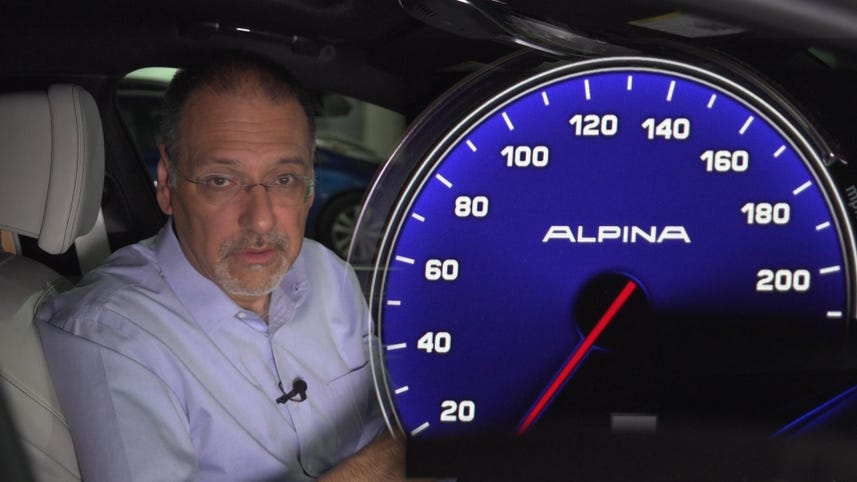
It's right there in front of you all the time you're driving, your instrument panel.
Yet, most of us basically just glance at speed and fuel and ignore the rest.
Let's fix that as I show you how to really appreciate all the good data coming off your IP.
[MUSIC]
Okay, the king of the instrument panel is the speedometer.
It only has to show miles by the way in the US, not kilometers.
Some cars will but they don't have to.
It can read to any speed that it wants.
Some car makers will get all fancy on you and say, let's go up to 220 or in this car.
200 like you'd ever do that.
But, this car could, so I guess that's credible but not safe.
Know that back in 1974 there was a US law that said speedometers could read no higher than 85 miles an hour and had to emphasize 55, the new national speed limit.
It wasn't repealed until 1995.
It was all about getting folks to drive more slowly and save feel.
Those days are long gone so speedometers can show wild speeds.
They only have to be accurate within five miles per hour at 50 miles an hour.
So don't be sitting there thinking this is gonna be your ironclad argument in court when you get a ticket.
It can be off by a fair amount, especially on the freeway.
Now next to your speedometer is your tachometer and if the speedo is the king of the hill, the tach may be the joker.
In most cars, there's no point in having it.
It's there because it's great instrument theater.
It moves a lot.
It goes along with the engine sound.
It makes you think your car is a little racecar.
But it's actually kinda useless for most driving, especially with an automatic transmission that you just keep in drive.
For what it's worth, it shows how many revolutions per minute.
Your engine is turning, and there's a red line.
It's usually solid red, where the engine should never go, and either yellow or dotted red before that, where the engine really shouldn't go.
And, you shouldn't drive it that high.
But again, with an automatic transmission, it's not up to you, and the car will handle itself.
The fuel gauge needs almost no introduction.
Of course we all look at that all the time especially when it's on the lower range.
Know this about the fuel gauge though.
It almost always has a very conservative, readout and reserve.
So when you get down to the bottom there, no way your car's sort of color indication means And then though, that even when you're flat to the bottom, you probably have a couple gallons extra in reserve.
Car makers have no interest in you running out of gas.
It makes you hate your car.
So, they make it really hard to do so.
Read your owners manual to find out exactly where your reserves starts, on the gauge and how much fuel there is at that point.
Then there's the poor old temperature gauge.
I say this with some sadness because some cars are getting rid of it partly because cars are so reliably engineered now they just basically never overheat.
And most folks never care about that gauge or look at it anyway.
If you do have a car that has one though, note that the middle is usually normal And that typically mean around 190 degrees farenheit is the coolant temperature in the engine.
Again, this can be a little bit of who cares?
Because whether you've got a gauge or whether you've got a warning light you're gonna know if the car's overheating and that's rarely gonna happen.
At least a gauge will give you warning before it happens, a light may give you less of that.
Now there's a couple of dreaded lights on the instrument panel, typically along the lines of engine and check engine.
Here's the difference on those.
In just about every car check engine means something to do with the emissions system.
The engine light tends to be more dire.
That could indicate a bigger problem, including low oil pressure.
Because a long time ago most cars got rid of oil pressure gauges.
Oil pressure is key to keeping the engine lubricated so it doesn't seize or wear itself out very rapidly.
So when you see an engine light or something like that take heed, pull over and figure it out.
And finally some cars that have so many LCD's now are taking advantage of them to add some virtual gauges over here that are a little less common.
On this BMW for example, we can get a realtime reading of horsepower and torque coming from the engine.
The two indications of how much work it's doing.
Now, what's going on here is very unneccessary.
That's why most cars won't have this.
But it goes to show you something.
The car is a digital network these days, filled with sensors.
And they could put up all kinds of indications on the screen should they want to.
If you're really into that check out our piece on using OBD-II Adapters a little dongle you stick under your dash and that can turn your phone into an amazing ancillary instrument panel showing you stuff that car makers don't even put on the screen itself.
Kind of cool if you are into that.